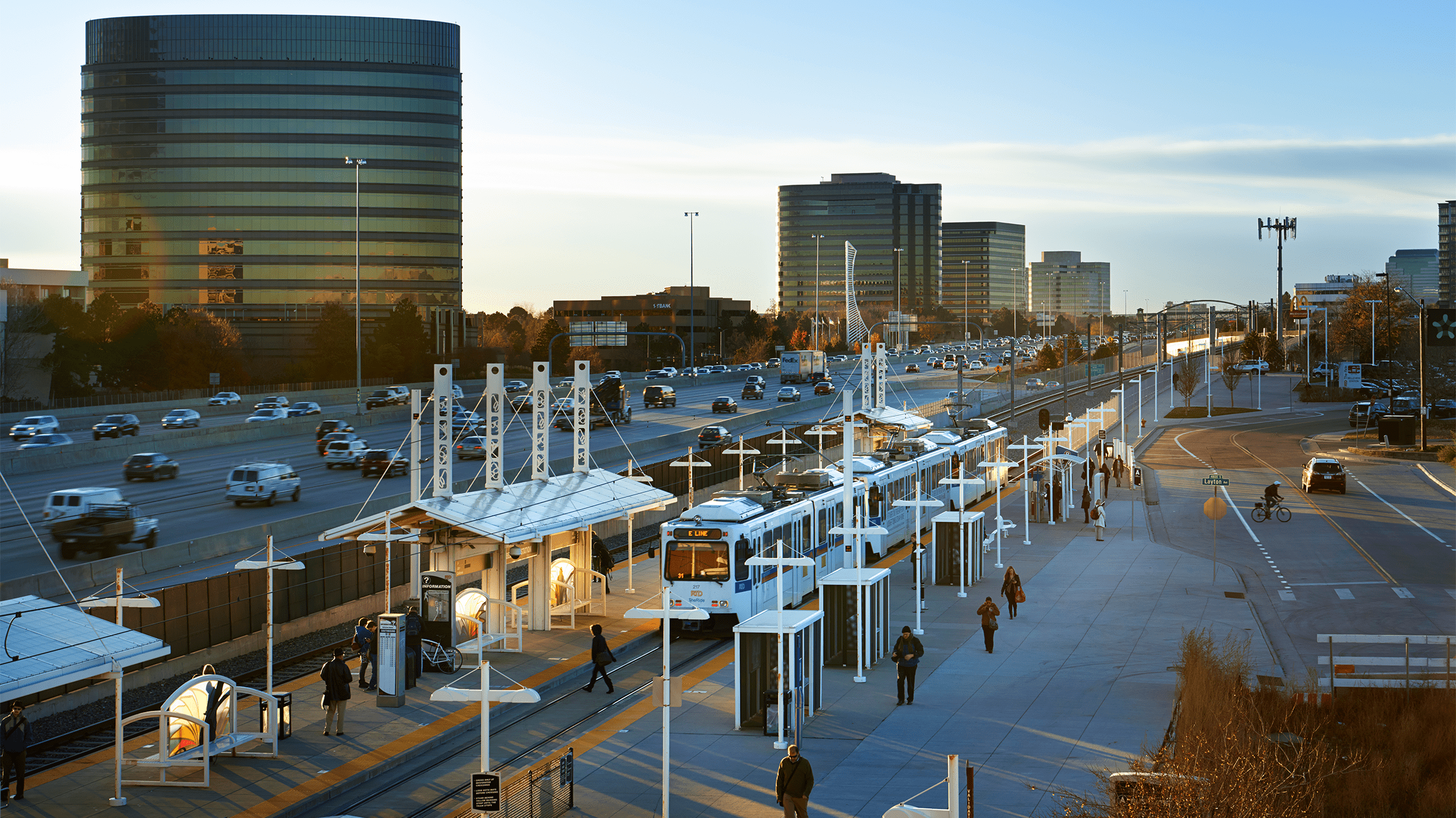If you haven’t heard yet, take note: Light rail service will temporarily shut down at the Lincoln and County Line stations along Denver’s southeast corridor. The closure is scheduled to begin on Friday, March 16 at 9 p.m., and open back up after 3 a.m. on Monday, March 26.
Dry Creek station will act as the end of line over the course of the shutdown, but what if you live or need to travel south of Dry Creek station during that time? Whether you’re visiting for one of the many big events in Denver during that time, normally use those stations for your commute or just need to get some much-needed shopping time in, we’ve got your back.
Here’s how to manage getting around the closure when you need to go or come from south of Dry Creek station:
Free shuttle buses
You’ll still be able to park at either the County Line or Lincoln stations, it’s just the train service and platforms that will be off limits. Of course, parking there does you no good if you can’t get anywhere afterwards.
Luckily, RTD is contracting with several private charter companies to provide free shuttle buses between stations. From Lincoln station an express bus will take you straight to Dry Creek station, and vice versa. There will also be an All Stop bus, which adds an extra stop at County Line station.
If you need to make it to the Park Meadows area, be sure to catch the All Stop bus from Dry Creek or Lincoln stations and get off at County Line.
Remember to look for charter buses, as they won’t have the RTD logo on them.
Shuttle service begins around 4 or 5 a.m. most days, depending on which route you need. For more details and the full schedule, click here.
Lyft it up
RTD has partnered with Lyft to provide ride discounts for passengers affected by the station closures. This might be the best option for those who need to travel south of Dry Creek station, since you can not only get directly where you need to go, but enjoy some potential car karaoke.
Lyft is offering 20% discounts on up to five rides during the length of the light rail closure. Note that there is a maximum discount of $5 per ride.
To claim your discount, all you have to do is use discount code DRYCREEK20, or go here: lyft.com/invite/drycreek20.
Bus service
The light rail service should not disrupt regular bus service in the southeast Denver area in any way. Stop by RTD’s online trip planner service if you need to get south of Dry Creek on wheels instead of tracks.
Hotel shuttles
If you’re staying at a hotel south of Dry Creek station, most of them offer free or super-cheap shuttle service. Requesting one to take you to Dry Creek should be a breeze, but make sure you ask them whether they’ll be able to pick you up when you get back.
Shuttle drivers also tend to know the best local eats and things to do, so pick their brains while you’re riding. And don’t forget to have a little cash on hand to tip the driver.
Driving a car
If you’re visiting Denver during the light rail closure and were hoping to avoid renting a car, you can definitely get away with it — just make sure you’ve given yourself some extra time.
But driving is of course another option for getting around the closure, but with one of the biggest volleyball tournaments in the country, several spring breaks and general nice weather expected to already increase traffic during that time, be prepared for some extra bumps.
And remember that if you’re heading into downtown Denver from the southeast corridor, parking is hard to find and expensive, and parking spaces at Dry Creek station and stations north of it are expected to tighten up with increased demand.
Driving your own car is certainly a good option, but keep in mind the few extra obstacles you’ll need to plan for.
Suggested Reading:
Stay flexible
Keep in mind the work being completed is weather dependent. If a nasty storm rolls in, be sure to check with RTD to see if the schedule has been adjusted and tweak your travel plans accordingly.
Now that you know all of your options, getting around the light rail closure should be a breeze.
Still looking for more info? Check out our need-to-know guide to the closure.

